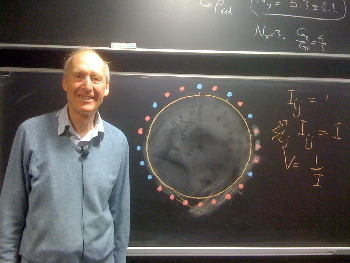A Radical Reinterpretation of Einstein’s Theory

The shape of an object is a real, objective quality according to the theory of shape dynamics.
Photo: Jonathan/Flickr (CC BY-NC-ND)
For NOVA NEXT, Dan Falk writes about physicist Julian Barbour and his colleagues attempts to change the way “we view as the fundamental elements of reality.”
For Julian Barbour, those musings most often involve the nature of space and time. Barbour, 78, is an independent physicist who contemplates the cosmos from College Farm, a rustic thatched-roof country house some twenty miles north of Oxford. He is perhaps best known for his 1999 book The End of Time: The Next Revolution in Physics, in which he argues that time is an illusion.
While country walks may be best enjoyed on one’s own, musings about theoretical physics can benefit from good, smart company—and Barbour has made a point of inviting a handful of bright young physicists to join him for periodic brainstorming sessions at College Farm—think Plato’s Academy in the English countryside.

Photograph of Julian Barbour by George Musser
Their latest offering is something called “shape dynamics.” (If you’ve never heard of shape dynamics, that’s OK—neither have most physicists.) It could, of course, be a dead end, as most bold new ideas in physics are. Or it could be the next great revolution in our conception of the cosmos. Its supporters describe it as a new way of looking at gravity, although it could end up being quite a bit more than that. It appears to give a radical new picture of space and time—and of black holes in particular. It could even alter our view of what’s “real” in the universe.
Last summer, Barbour and his colleagues gathered for a workshop at the Perimeter Institute for Theoretical Physics in Waterloo, Ontario, to hash out the ideas behind shape dynamics. During a break in the workshop, I sat down with a young physicist named Sean Gryb, one of Barbour’s protégés.
“We’re trying to re-evaluate the basic assumptions of Einstein’s theory of relativity—in particular, what it has to say about gravity,” Gryb says. “It’s a shift in what we view as the fundamental elements of reality.”
Read the rest of Falks fascinating article at NOVA NEXT.
